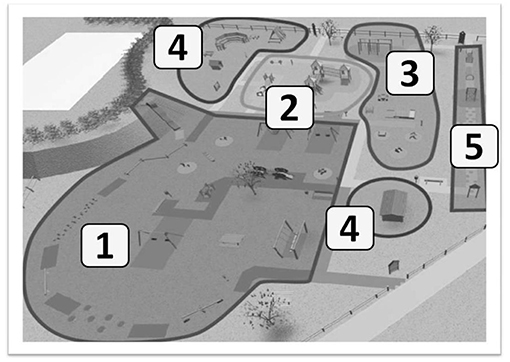Playground Safety Guidelines
Categories:
According to the U.S. Consumer Product Safety Commission (CPSC), over 200,000 children’s emergency room visits annually are due to injuries acquired while on a playground. Of these injuries, 44% are due to falls, while 23% are due to equipment-related hazards resulting from design or assembly. Below are some measures you can take to reduce the likelihood of these injuries occurring on your playground equipment:
Supervision
Lack of adequate supervision and monitoring of equipment usage is the primary reason behind playground injuries. Below are a few things to remind staff of when supervising playgrounds:
- Staff should be diligent in watching, guiding, and controlling the behavior of youth.
- All staff attention should be focused around supervising the youth, not doing any other activities.
- Child-to-staff ratios should be maintained at all times.
- Pre-school aged children require more attentive supervision than older children, however older children nonetheless still require supervision.
- Not all playground equipment is appropriate for youth of all ages or development skills. Therefore, if there are youth of different ages using the equipment, staff will need to supervise who is using what.
- Staff should be positioned throughout the playground so that all potential areas where youth may be located can be supervised. Create a zone chart that clearly marks what area of the playground each staff member is responsible for. An example of what this zone chart may look like is below:

Fall Protection
Accidents are inevitable on a playground, but certain precautions are recommended by the CPSC in order to reduce the likelihood that a simple accident will result in a serious injury.
- Before using any equipment, check the surrounding areas to make sure that there are no hazards.
- Ensure that the playground being used has appropriate surfacing that is energy-absorbing. Some examples include:
- Unitary materials such a rubber mats or tiles
- Loose-fill surfacing materials such as engineered wood fiber or rubber mulch
- If using loose-fill materials ensure that:
- No less than 9 inches of loose-fill material is used
- At least 25% compression over time is accounted for (i.e. 12 inches of initial fill will compress down to 9 inches)
- There is a method for containing the material around the perimeter of the playground
- Good drainage is possible in order to maintain the loose-fill surfacing
- More material is placed at highly-trafficked areas such as under swings and at slide exits
Equipment & Hardware
Although inspections should be done prior to each use of the playground, it is incredibly vital to do a thorough inspection of the playground after a season change or inclement weather. While it is recommended to follow manufacturers’ guidelines when it comes to maintenance of playground equipment, below are some general recommendations for staff to keep in mind during equipment checks.
- Hardware should be smooth against the surface of the playground and should be unable to be loosened or removed without tools.
- S-hooks and C-hooks should be tightly closed, meaning that there is no gap or space greater than 0.04 inches (about the thickness of a dime).
- Openings that are between 3.5 and 9 inches pose a potential head entrapment threat and should not be in the playground area.
- Ensure that sharp points, corners, and edges are not exposed. All corners should be rounded.
- There should be a minimum of 6 feet clear in all directions around each piece of playground equipment in which adjacent play surfaces are less than 30 inches high. There should be a minimum of 9 feet between equipment when adjacent play surfaces are more than 30 inches high.
- There should be no rust, rot, cracks, or splinters on any equipment.
- All surfaces with an elevation above 18 inches should have guard rails.
- All equipment should be securely anchored to the ground to prevent any potential movement or shifting.
For specific guidance around preventing injuries on monkey bars, please visit our resource on Monkey Bar Safety Guidelines.
